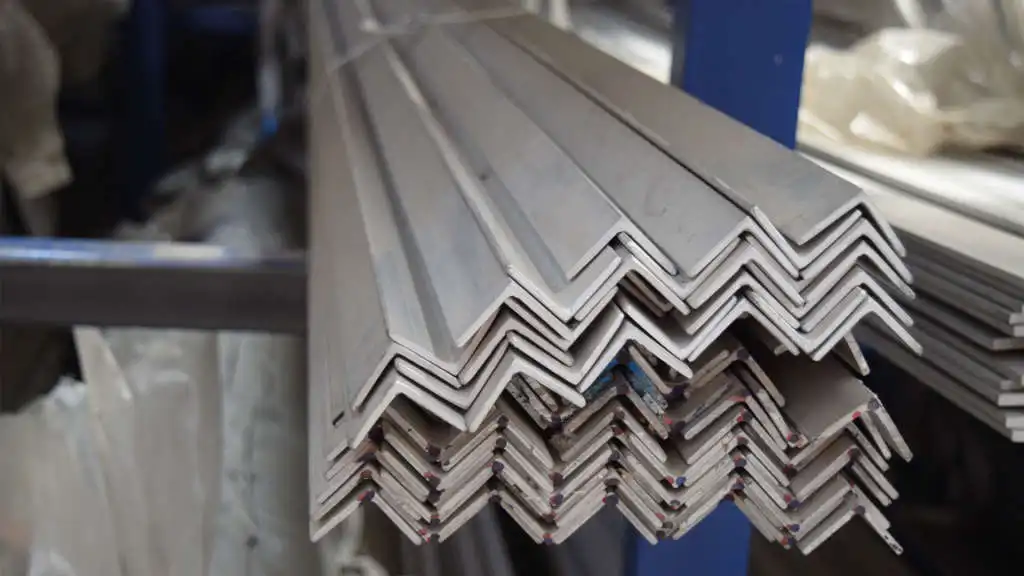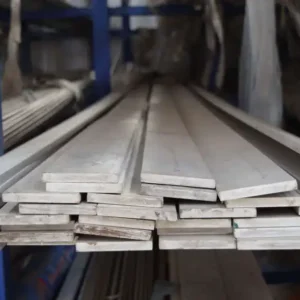Stainless Angle Iron
The fact that it provides high resistance to corrosion, its continuity in terms of its mechanical properties, and its perfectly harmonious stainless corner material on the surface are effective in the preference. Stainless angle iron production technologies are constantly renewed. Thanks to the updating of production technologies, angle bar material is produced in a much higher quality and easier to use compared to the previous ones. In this case, it is naturally effective in the choice of angle bracket material and the spread of its usage area.
In fact, the original of the Stainless Angle material is L-shaped. However, nowadays it is possible to produce it with different properties. These products, which were produced as original L angle brackets, are generally equal on both sides. However, it is possible to prepare these products in the desired dimensions in line with the wishes of the customers. Stainless steel bracket material has to be produced with an international quality certificate.
– It resembles an L shape in terms of appearance. In this way, splicing and welding can be done easily during the connection process.
– It has a durable structure.
– Suitable for long-term use.
– Thanks to its stainless feature, it can also be used in electronic devices.
– The side dimensions of the produced brackets are generally 40×40, 50×50.
– Angle thicknesses are the same as the side dimensions. For example, 4mm thickness is used for 40×40 edge size. Generally, 1mm thinner thickness, ie 40x40x3mm, is preferred.
– While the angles produced are produced in 304 or 316 quality, the production other than this quality is made of sheet metal manufacturing.
Usage areas
Stainless angle irons are used in the machinery manufacturing sector. This usage is in the main body of the machine, which is generally called the machine chassis. Chassis are generally made by choosing profiles. Angle brackets are used as support beams between these profiles to provide strength.
Stainless angle irons are also frequently used in the shipbuilding industry. Especially due to its high corrosion resistance, 316 quality angle irons are used considerably in shipbuilding. It is used to support carrier columns in ship skeletons. The corrosion resistance of 316 quality is the main factor in choosing stainless steel in this sector.
Stainless steels are preferred because a roadmap based on hygiene is followed in the food industry. Its hygienic feature makes stainless steel a must-have for the food industry. Stainless angle irons are used in many areas in the food industry. For example, angle brackets can be used in mixer blades. In addition, angle brackets are also used for supporting purposes in boilers and warehouses used in the food industry.
The sectors we mentioned above are just a few of the dozens of sectors where stainless angle irons are used. In addition to these, stainless steel angles are also used in sectors such as architecture, energy, chemistry, petrochemistry and automotive.
Their quality
304 (1.4301) Quality Stainless Steel
|
Corrosion Resistance:
|
This quality, which is quite sufficient for daily use and standard productions, is not preferred because it will rust in more corrosive environments. In more demanding conditions, 316, 316L, 316Ti or duplex (1.4462) grade stainless steel should be preferred instead of 304 grade stainless steel.
|
|
Mechanical Properties:
|
This stainless steel quality, which is often sufficient in terms of mechanical strength, is not preferred where high yield and rupture strength is required. When the mechanical properties come to the fore, considering the material structure,
|
|
Tendency to Forge:
|
This quality material has a standard malleability. It should not be preferred in places where metal forging is extremely intense.
|
|
Weldability:
|
Plain 304 quality stainless steel is an ideal material for places where there is no excessive welding. In places where the weld is more intense, 304L quality material with lower carbon (L=low carbon) should be preferred to prevent swelling.
|
|
Machinability:
|
This material, which is not bad in terms of machinability, is not preferred in places where processing is intense. 304 quality stainless steel is less preferred, especially in lathes and machining centers, as it wraps chips. In places where this type of process is intense, 303 quality stainless steel, which is the automatic version of 304, should be preferred.304 (1.4301) Kimyasal Bileşimi
|
|
Chemical Composition
|
|
Quality
|
C
|
Mn
|
P
|
S
|
Si
|
Cr
|
Ni
|
|
304 (1.4301)
|
%0.08 max
|
%2.0 max
|
%0.045 max
|
%0.03 max
|
%0.75 max
|
%18-20
|
%8-10
|
|
Mechanical Properties at Room Temperature
|
|
Quality
|
304 (1.4301) X5CrNi18-10
|
|
Breaking strength
|
515 – 720 MPa
|
|
Yield strength (0.2%)
|
210 MPa (min)
|
|
Hardness, Rockwell (HB)
|
201
|
|
|
|
|
|
Physical Properties at Room Temperature
|
|
Features
|
Değerler
|
|
Density (Specific gravity)
|
8000 kg/m³
|
|
Melting temperature
|
1450°C
|
|
Modulus of Elasticity
|
193 GPa
|
|
Amount of electrical resistance
|
0.072×10^-6 Ωm
|
|
Heat permeability
|
17.2 W/m.K
|
|
|
|
|
|
Summary of Quality Characteristics
|
|
304 stainless is numbered as 1.4301 quality stainless according to the EN standard.
|
|
304 quality stainless is also called X5CrNi18-10 according to EN standard.
|
|
This stainless quality is in the category of esthenitic stainless steels.
|
|
Materials of this stainless steel grade can be well formed and welded well.
|
|
Stainless steels of this quality do not attract magnets and have a high corrosion resistance.
|
316 (1.4401) Grade Stainless Steel
|
Chemical Composition
|
|
Quality
|
C
|
Mn
|
P
|
S
|
Si
|
Cr
|
Ni
|
Mo
|
|
|
316 (1.4401)
|
0.08max
|
2
|
0.045
|
0.030
|
1
|
16.0-18.0arası
|
10,0- 14arası
|
2.0-3.0 arası
|
|
|
|
|
|
|
|
|
|
|
|
|
Mechanical Properties at Room Temperature
|
|
Quality
|
316 (1.4401) X5CrNiMo17-12-2
|
316L (1.4404)
|
316Ti (1.4571)
|
|
breaking strength
|
515 MPa
|
485 MPa
|
485 MPa
|
|
Yield strength (0.2%)
|
205 MPa
|
170 MPa
|
170 MPa
|
|
Hardness, Rockwell (B)
|
95
|
95
|
–
|
|
Summary of Quality Characteristics
|
|
316 stainless is numbered as 1.4401 quality stainless according to the EN standard.
|
|
316 quality stainless is also called X5CrNiMo17-12-2 according to EN standard.
|
|
316 and 316L quality stainless is one of the most widely used stainless steel grades in the world, along with 304 quality stainless.
|
|
This stainless quality is in the category of esthenitic stainless steels.
|
|
Materials of this stainless steel grade can be well formed and welded well.
|
|
Stainless steels of this quality do not attract magnets and have a high corrosion resistance.
|
|
The corrosion resistance of 316 grade stainless steel is better than 304 grade stainless steel.
|
|
General features
|
Explanation
|
|
Corrosion Resistance:
|
The corrosion resistance of this material is quite good. In harsher environments, 316Ti or duplex (1.4462) quality material should be preferred.
|
|
Mechanical Properties:
|
316 quality material shows mechanical properties similar to 304 quality material. For higher strength, 431, duplex (1.4462) or 630 (1.4542 PH17.4) can be preferred.
|
|
Tendency to Forge:
|
This grade of stainless steel has a good malleability tendency.
|
|
Weldability:
|
Weldability of this quality stainless is good. In environments with more welding, 316L or 316Ti quality stainless should be preferred.
|
|
Machinability:
|
In environments where corrosion resistance is insignificant, 303 or 430F quality stainless steel products may be preferred.
|









